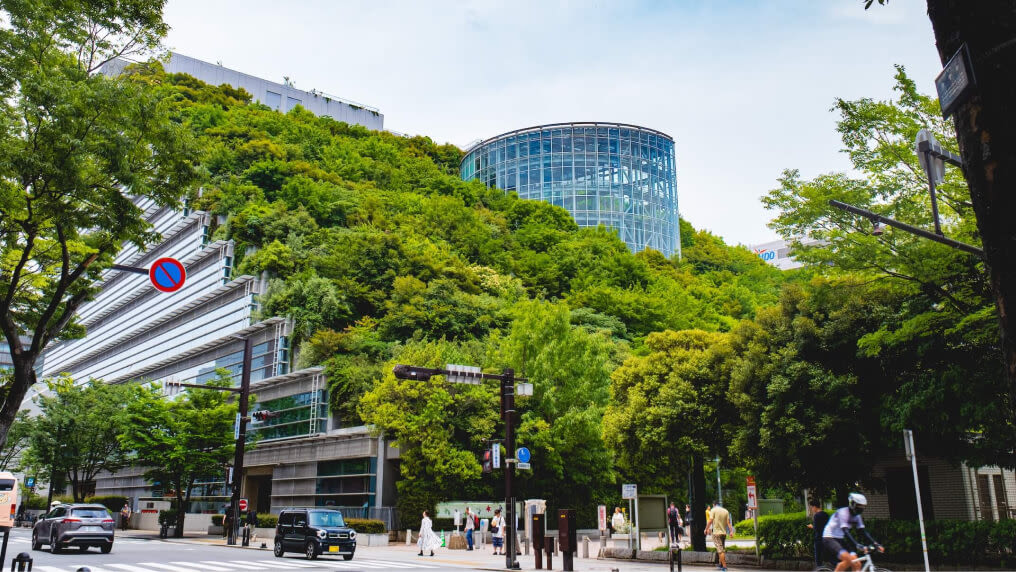In our new three-part series, we’re sharing three of the most popular articles written by the Ellen MacArthur Foundation’s editorial team. In today’s episode, we explore how a circular economy can keep us stay within the nine planetary boundaries set out by the Stockholm Resilience Centre, such as climate change, novel entities (otherwise known as pollution) and ocean acidification.
Listen on Spotify, Apple Podcasts, or wherever you get your podcast.
Transcript
Pippa Shawley 00:03
Hello and welcome to the Circular Economy Show. In today's episode, we'll be exploring how the circular economy can help us stay within the nine planetary boundaries, which define the limits of a stable planet. I'm going to share with you an article written by my colleague Emma elevage, senior editor here at the Ellen MacArthur Foundation. Emma covers the link between the circular economy and each planetary boundary in the article. But before we dive in, here's a quick recap of those nine boundaries. Climate change, novel entities otherwise known as pollution, stratospheric ozone depletion, which is caused by the fourth boundary, atmospheric aerosol loading, ocean acidification, biogeochemical flows, which is the way in which elements like carbon, nitrogen and phosphorus cycles are in the environment, freshwater change, land system change, biosphere integrity more commonly understood as biodiversity and ecosystem function. So, how can the circular economy help us stay within planetary boundaries? Humanity is reaching and exceeding the limits of the Earth. This conclusion drawn in 2009 by a team of scientists from the Stockholm resilience centre, or the SRC confirmed what many had understood for decades, led by Johan rock strim, the SRC proposed a set of nine planetary boundaries, which define the biophysical limits of a stable and resilient planet. These limits are being pushed up against and exceeded as a result of the extractive and polluting nature of our current linear economy, which has propelled us into a human dominated epoch. While humanity might be dominant, our separation from nature is increasingly acknowledged as being to our own detriment. Our take make waste economy has led to widespread resource depletion. The pace at which we are degrading soil threatens global food supplies. Many of the minerals and metals commonly used in the manufacturing of everything from smartphones to sunscreen, are wasted and disposed of in ways that have serious environmental consequences. Freshwater essential to our existence and also the production and supply of goods and services. While renewable is a finite resource under pressure. We now know not only that the Earth has its lines that must not be crossed, but that since 2015, at least five have already been climate change, biosphere integrity, land system change, biogeochemical flows, and novel entities more commonly known as pollution. Last year, new analysis revealed that a six planetary boundary freshwater change has also been breached. In the process of making, using and disposing of items and services needed to house feed, fuel, and clothe the world. We are pushing ourselves outside a zone of planetary safety and into a place of increasing risk and volatility. Getting back within those planetary boundaries is still possible. Humanity has already proven that it is capable of coming together to take collective action. Think for example of the ozone protecting 1987 Montreal Protocol ratified by international governments and reflected in business decision making. But the challenges are complex, and so are the systems that created them. We need change that is systemic, not to piecemeal.
Pippa Shawley 03:33
The symptoms of these planetary boundary breaches, as well as the warning signs of those at risk but not yet crossed. A widespread the most headline grabbing are already well known that there is forecast to be more plastic than fish in our ocean by 2050 has become a powerful environmental signifier that 3.4 billion tonnes of global waste is expected in the same time span is easily imagined in rubbish dumps the size of 100 football fields. That 10,000 acres of Amazon rainforest loss to agri business driven deforestation every day, is synonymous with the biodiversity and climate crises. Each image and impact can be traced back to the design choices, manufacturing methods, supply chains and disposal decisions entrenched in a linear economy. But not all the impacts of our extractive system are quite so conspicuous. soil degradation caused by conventional agriculture is harder to visualise, but devastating and its impact on biodiversity loss, and risks to global food production. The loss of Flora Fauna and fungi may be barely noticeable day by day, but its impacts on ecosystem function are already evident. The extraction of materials and the pressure that places on planetary boundaries is in most cases inversely proportional to the number of times a product or service is used as such Waste exists as much in unworn clothes and underutilised buildings, cars and products as it doesn't trash. Pollution is not always perceptible invisible contaminants in our groundwater and microplastics in our blood streams are just some of the less obvious ways our current linear economy affects nature and human health, like each aspect of the linear economy pushes against planetary boundaries. By examining any product, we can observe these interactions in place. Take a single bottle of vegetable oil for example. Its ingredients derived from crops grown on intensively irrigated and fertilised land cleared for industrial agriculture. Impact on the boundaries of land system change, biodiversity integrity, biogeochemical flows and freshwater use. The Virgin fossil fuels used to power the production process, create the plastic packaging, and transport the finished product all contributes to climate change, and by consequence biodiversity loss. In a current system with high leakage rates, the disposal of end of life packaging results in pollution on land and at sea, that encroaches on multiple planetary boundaries. Besides, these examples are only the beginning. Though each planetary boundary is distinct, all interrelated. Perhaps the most well known codependency is that of climate change and biodiversity loss. Just as climate change accounts for 11 to 16% of biodiversity loss. Biodiversity loss is itself a powerful accelerator of climate change by undermining nature's ability to regulate greenhouse gas emissions in the atmosphere. Other examples are more complicated. The overuse of nitrogen and phosphorus based fertilisers when leaked into freshwater and marine environments via agricultural runoff caused an increase in toxic algal blooms and ocean dead zones. Since the overuse of fertilisers degrade soil health, this runoff is accompanied by soil erosion, which in turn compromises the soil stability, generating greater levels of runoff in future. This is accelerated by extreme weather like heavy rainfall and flooding. Such events are made more frequent and severe by climate change, which is driven in part by the greenhouse gases emitted during the production of the fertilisers in the first place. As the soil degrades, more fertiliser needs to be applied to maintain yields. In this reinforcing cycle of negative impacts, pushing up against the biogeochemical flow planetary boundary is both a contributor to and a result of climate change and biodiversity loss. unpicking these interlocking impacts requires consideration of the whole, making progress on a single planetary boundary can risk unintended consequences. Until recently, the planetary boundary of stratospheric ozone depletion was thanks to the historic 1987 Montreal Protocol on a more positive pathway. However, new research suggests is recovery is at risk following chemical reactions from recent wildfires, which are increasing in severity and frequency as climate change progresses. There are myriad examples like this. Each individual planetary boundary breach becomes a risk multiplier. overshooting in one area risk increasing the fragility of not only its closest link, but the entire earth system. Happily and more hopefully, the reverse is also true. By taking a whole system approach to better understand the complex interplay between economic activity and environmental impact, we can orientate our innovation efforts around this same relational pattern. In leveraging the power of positive action at scale, we can redesign our economic system, so that it is regenerative by design rather than degenerative by consequence. The planetary boundary framework acts as a situational analysis for the state of the planet upon which business society and the natural world depend. It sets the scale of the challenge without professing to propose specific solutions. We need an economic framework which addresses the root causes of each planetary pressure point and plots a positive way forward. A circular economy eliminates waste and pollution circulates products and materials at their highest value and regenerates nature by design. accelerating its transition can not only help to bring us back within the biophysical limits of our planet and keep us there, but build economic value, deliver material cost savings and create jobs at the same time. What happens if we eliminate waste and pollution? If waste is the most visual representation of the linear account? To me, evident everywhere from construction to clothing and electronics to interiors, it's elimination is one of the central tenets of the circular economy. Waste itself is an inherently anthropogenic concept, supercharged by the birth of planned obsolescence in order to stimulate demand and ensure continual production. Solving the waste crisis, which both directly and indirectly contributes to cascading planetary boundary breaches cannot be achieved through surface level strategies of reduction or recycling alone. Rather, we must reframe our entire approach. So the inner circular economy as in nature, waste simply does not exist. When we take a material definition of waste, plastic is often our first thought 75% of all plastic ever produced becomes waste from packaging departs, these ubiquitous compounds are used by almost every sector on Earth. The planetary boundaries case for action on plastics is unequivocal. We must stop it from polluting our atmosphere, poisoning our land systems and entering our oceans. That means stemming the tide at source while it is essential that any plastics we do produce a reused, recycled or composted. It is even more important that businesses prioritise models of design and delivery, which eradicate the use of virgin fossil fuel based plastic from the outset. Transitioning to a circular economy, which eliminates all problematic and unnecessary plastic involves harnessing the same enthusiasm for design as brought it to the fore in the first place, without losing any of its functions. Designing alternatives such as solid shampoo bars, toothpaste, tablets, and compostable food casings can drastically reduce the pressure on multiple planetary boundaries at once. Every time a business removes the need for Virgin plastic within or around a product or service. It helps prevent the leakage of environmental pollutants, including those that are ozone depleting, protect biodiversity, reduce climate change, causing greenhouse gas emissions, relax anthropogenic pressure on ocean acidification, keep microplastics out of freshwater systems and stop the release of further airborne pollutants into the atmosphere. That's a lot of boundaries. compellingly, a circular economy for plastics offers businesses strong economic and social boundaries to not only by reducing packaging and transportation costs, but also by encouraging investment to flow into new areas of upstream innovation. By 2040. A circular economy for plastic has the potential to generate savings of 200 billion US dollars per year, and create 700,000 net additional jobs. Similar waste elimination strategies can be implemented and scaled to the benefit of multiple planetary boundaries across all sectors and industries from construction to computing
Pippa Shawley 13:02
was about circulating products and materials. The second principle of a sector economy involves keeping materials and products in use at the highest value. The more times a product or service is used, the fewer of them and need it by making much better use of the embodied energy and labour and the intrinsic value of the materials in a product or service applicable to everything from headphones to highchairs. Washing machines to watches and lighting to laptops. A circular economy prevents the need for further material extraction. In doing so, it not only reduces pressure on individual planetary boundaries, land system change, biosphere integrity, freshwater novel entities, climate change and more. But make space for the Earth's natural systems to recover and regenerate across the planetary system. The global food industry is responsible for a third of global greenhouse gas emissions, and is the primary driver of biodiversity loss worldwide. A circular economy for food can help to rebalance planetary boundaries at constituent level and in the longer term a holistic one. Landfill bound surplus edible food is a leading contributor to climate change. In a circular economy. This is tackled by diverting and redistributing unused food to those in need. From city wide food sharing apps to hyperlocal community collections. When no longer suitable for human consumption, inedible food is kept in a prolonged cycle of use, as biomaterials for use and construction, starch and sugars based plastic substitutes, or even into clothes and shoes. To date, efforts to valorize millions of tonnes of organic waste have given us dresses made from the peel of Italian oranges, shoes from postconsumer coffee grounds, and vegan leather handbags from leftover grape skins. On the ground farmers benefit to harvesting the entire plant creates new revenue streams Which derived profit from byproducts across the whole crop. The global production of tomatoes, for example, generates significant amounts of organic agricultural waste, releasing excess co2 into the atmosphere and contributing to climate change. A circular economy for food mimics natural systems of regeneration, so that waste from one system is used as feedstock for another cycle. In the case of tomatoes, postharvest plant stems and dried leaves can be given a second life as materials for cardboard like packaging, waste filaments as bio composites, and post processing residues as bioresonance on the inside of tinned food. As long as these byproducts are processed without harmful chemicals and synthetic additives, what remains can eventually be returned to the biological cycle, putting nutrients back into the soil as organic fertiliser for the next generation of crops. What happens when we regenerate nature? Together, the elimination of waste and the circulation of products and materials go a long way towards improving the status of each planetary boundary. But transitioning our planet from a place of volatility to a state of stability will also require more affirmative action. The third vital component of a sector economy is the regeneration of nature, involving a total transformation of the way in which we design, manufacture, use and conclude products. A circular economy builds rather than degrades nature, with resulting benefits across each of the nine planetary boundaries. Regenerative production is often thought of in terms of agricultural food systems, but there are other parts of the economy that rely on farm natural resources to like fashion. The global fashion industry is responsible for the production of over 2.1 billion tonnes of greenhouse gas emissions annually, and the release of 20% of industrial water pollution globally. prioritising services such as resale rental repair and remaking can drastically reduce the emissions and pollution related impacts of clothing production in a fast fashion model. Reuse models help ease pressure on the boundaries of climate change and novel entities. But restoring planetary balance will require doing more good rather than just less harm. In a circular economy for fashion materials matter. Here the regeneration of nature starts by designing garments sourced from renewable plant based fibres begin with a basic cotton t shirt. Traditional cotton farming, being both water intensive and fertiliser dependent, with heavily on the planetary boundaries of freshwater use and biogeochemical flows long before seed blossoms into ball. Regenerative cotton farming, on the other hand, not only avoids these negative impacts, but actively generate significant climate and biodiversity benefits. By embracing regenerative production at scale, the global fashion industry has the potential to create positive outcomes across planetary boundaries. To illustrate, let's dig into the details on a regenerative cotton farm. using cover crops increases water retention secures soil stability, and reduces both local level reliance and planetary pressure on freshwater extraction. Introducing specific plants to attract pollinating insects, and repel unwanted pests eliminates the need for harmful fertilisers and pesticides, protecting biodiversity and decreasing the risk of ocean acidification caused by agricultural runoff. replacing traditional mono cropping with into crops such as cereals, lagoons and vegetables, means more plants per acre. maximising yields and reducing agricultural expansion on the planetary boundary of land system change. intercropping also fixes nitrogen into the soil, helping plants to access legacy phosphorus and thus reducing the demand for nitrogen and phosphorus heavy fertilisers, further eliminating agricultural runoff. Collectively, these actions all help the soil to capture carbon dioxide in the ground, rather than release it into the atmosphere. They also improve overall resilience to the overlapping risks exacerbated by climate change from disease outbreaks to extreme weather events. The planetary boundaries framework sets out the science of Earth's compounded crises, each is caused at its roots by our current linear economy. The circular economy as a response poses a triptych of principles by which we can individually and therefore collectively respond to the plurality of these planetary pressures. In decoupling economic activity from the consumption of finite resources, we dramatically reduce our demands on land, water and energy, cutting greenhouse gas emissions and eliminating the leakage of harmful toxins and pollutants into the Earth's system. Every stage in so doing, we can maintain and more importantly mend the connective tissue between a healthy and resilient environment and a healthy and resilient economy. Thanks for listening to this episode of the circular economy show. If you enjoyed this episode, please share it with your friends and colleagues, or leave us a review on Apple podcasts. If you'd like to read Emma's original article, you can find a link in the show notes of this episode. See you next time.





